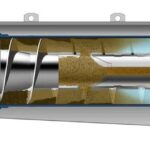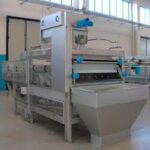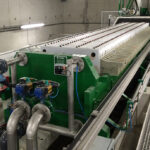THERMAL TREATMENT OF SEWAGE SLUDGE
- INTRODUCTION:
The sludge produced by wastewater treatment plants is essentially solid particles not retained by pre-treatment and water treatment processes (degradation and separation of water pollutants). Sludge consists of undegraded organic matter, mineral matter, micro-organisms, and water.
In France, the quantity of urban sludge produced is around 1.5 million tons of dry matter (tDM).
We distinguish:
- Primary sludge, which comes from the primary treatment of wastewater by decantation,
- Biological sludge: excess biomass from secondary biological treatment, also known as secondary sludge or activated sludge.
- Mixed sludge, a mixture of primary sludge and biological sludge. It comes from the entire plant.
- Physico-chemical sludge, resulting from decantation after treatment with a reagent.
All sludge consists of a mixture of organic and mineral matter from domestic and industrial wastewater. Its composition depends on the type of wastewater treatment. They all contain nitrogen, phosphorus, and organic matter. It may contain undesirable substances such as:
- Metals trace elements: We mainly find : Cadmium (Cd), Chromium (Cr), Copper (Cu), Mercury (Hg), Nickel (Ni), Lead (Pb) and Zinc (Zn). Some of these elements play an essential role in the body at low concentrations (trace elements), but generally become toxic above a certain concentration.
- Organic micropollutants: the substances most frequently considered are PAHs (Polycyclic Aromatic Hydrocarbons) and OTCs (Organic Trace Compounds). Among the OTCs present in sludge, PCBs (Polychlorinated biphenyls) (sum of 7 PCBs), Fluoranthene, Benzo(b)fluo-ranthene and Benzo(a)pyrene are listed in the decree of January 8, 1998, which requires their analysis prior to spreading. Sludge may also contain pesticides, phthalates, nitrates, etc.
- Pathogenic micro-organisms: viruses, bacteria, protozoa, parasitic worms, and fungi. They are present in faecal matter discharged into wastewater systems and in raw sludge.
- Therapeutic substances, including hormones and in particular contraceptives, cancer treatment residues…
The concentration of municipal sludge can vary depending on the type of treatment but is generally quite high. Sludge can contain between 1% and 5% dry matter, which means that the rest is water.
- SLUDGE TREATMENT IN WASTEWATER TREATMENT PLANTS:
At the end of the water treatment process, sludge contains around 95-99% water. Water is normally present in two forms:
- Free water: poorly absorbed, can be removed by mechanical dehydration,
- Bound water: bound with bacteria or other particles.
Sludge treatment therefore consists first and foremost in reducing its water content and effectively reducing its pollutant and fermentable load. The aim is to prepare the sludge for an ultimate stage of recovery or disposal. There are several techniques that can complement each other: thickening, dewatering, stabilization (often combined with sanitation) and drying.

Thickening is generally the first step in sludge treatment. It’s a simple, low-energy process. It targets the reduction of the volume of raw sludge and is a preliminary step to subsequent treatments. The dryness rate obtained can reach up to 10% dry matter.
Various thickening methods are used to thicken the sludge:
- Gravity thickening: settling or sedimentation,
- Thickening by flotation,
- Centrifugal thickening,
- Thickening by drainage system (grids and draining table).
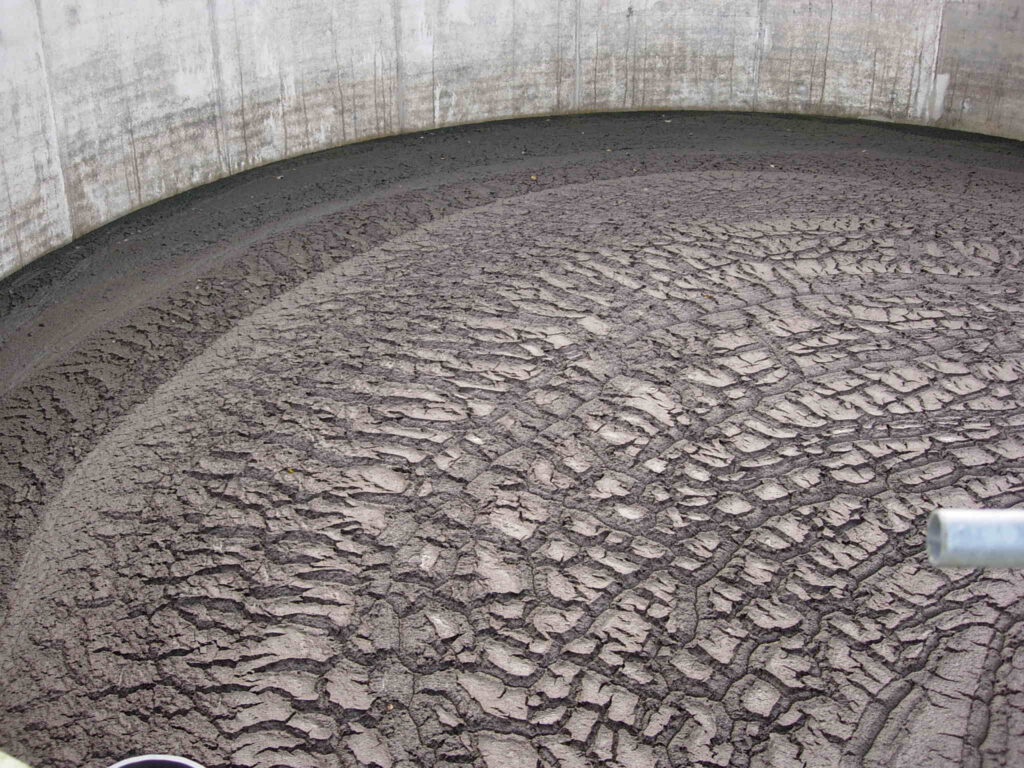
Dewatering is the second stage of sludge volume reduction on thickened sludge, to obtain a higher sludge dryness (on average between 20 and 35% depending on the nature of the sludge), improving storage capacity, and reducing transport costs. Several mechanical dewatering techniques are available:
- Filter presses,
- Plate filter,
- Membrane plate filter,
- Band filter,
- Screw press,
- Centrifuge
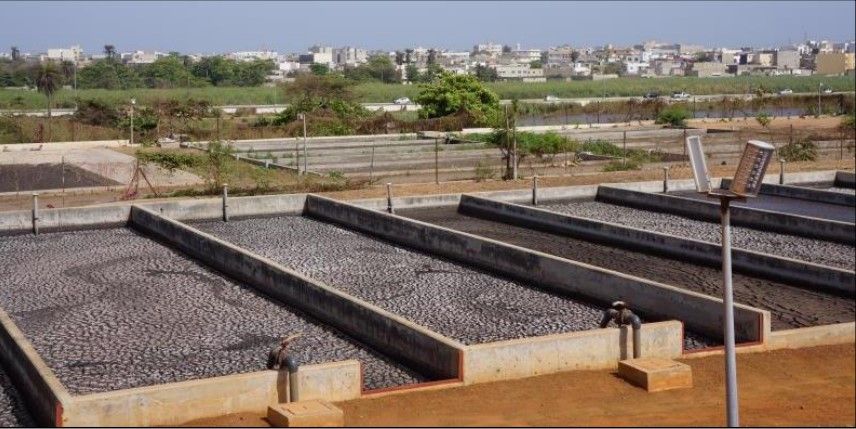
Drying is an operation in sludge treatment involving the evaporation of free and bound water. Several drying techniques are available:
- Drying bed
- Solar drying,
- Sand bed,
- Drying lagoon,
- Bed planted with macrophytes.
- Thermal drying
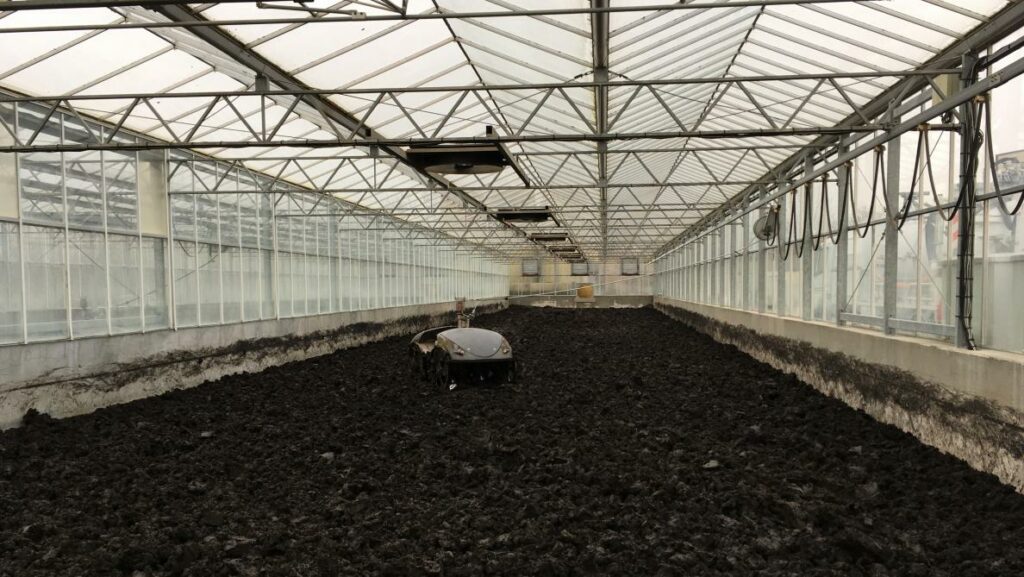
Stabilization consists of minimizing the biological activity of sludge degradation, particularly fermentation. It significantly reduces odours nuisances, methane emissions, leaching risks, bacteria, and Biological Oxygen Demand (BOD5).
Sanitation is designed to reduce the presence of pathogens in the sludge, to avoid possible contamination in the event of use for ecosystem enhancement (land application or revegetation, for example). These two steps can be carried out biologically, chemically, or physically.
These two treatments are often carried out by the same process.
Wastewater treatment therefore generates a considerable quantity of sludge, which is increasing year on year, due to population growth, over-consumption, and increasingly complex products. The disposal of this sludge represents a real problem in the management of wastewater treatment plants. There are many ways of using this sludge, but here we present a thermal sludge recovery solution marketed by FMI Process, which has the merit of not transferring sludge pollutants to ecosystems.
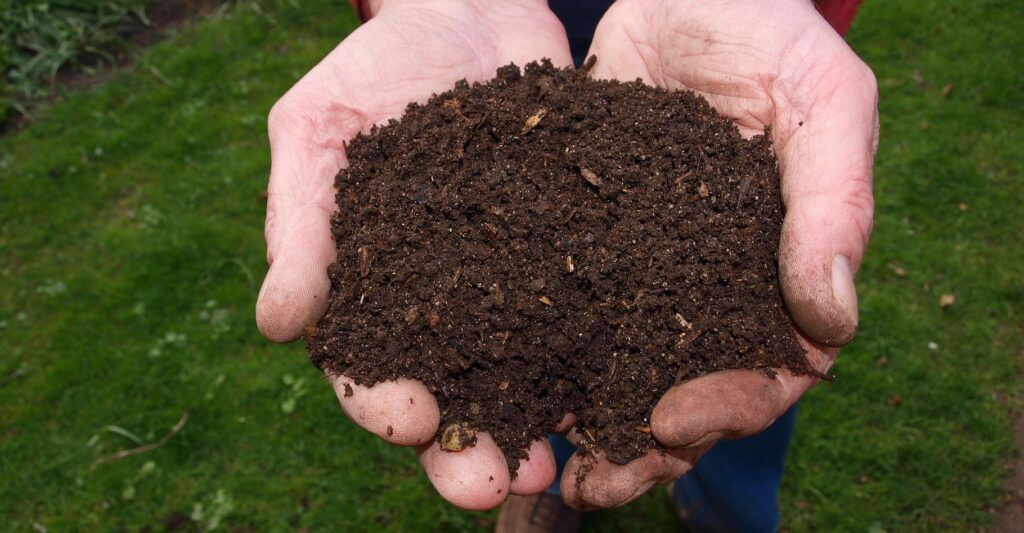
3 – OUR SLUDGE DISPOSAL SOLUTIONS: SLUDGE INCINRERATION BY A FLUIDIZED-BED FURNACE:
FMI Process offers a treatment solution with a range of fluidized bed furnaces. Thermal oxidation and dry gas treatment are effective ways of eliminating pathogens (bacteria, viruses, parasites, moulds, etc.) and numerous pollutants (heavy metals, persistent organic pollutants (POPs), PCBs, PAHs, PFAS, microplastics) contained in sludge. These processes can reduce the quantity of sludge by 90%, while rendering it inert.
OUR SOLUTIONS CAN REDUCE THE ECOLOGICAL FOOTPRINT
Once considered energy-intensive plants, our solutions are evolving to reduce their carbon footprint and lower their energy impact.
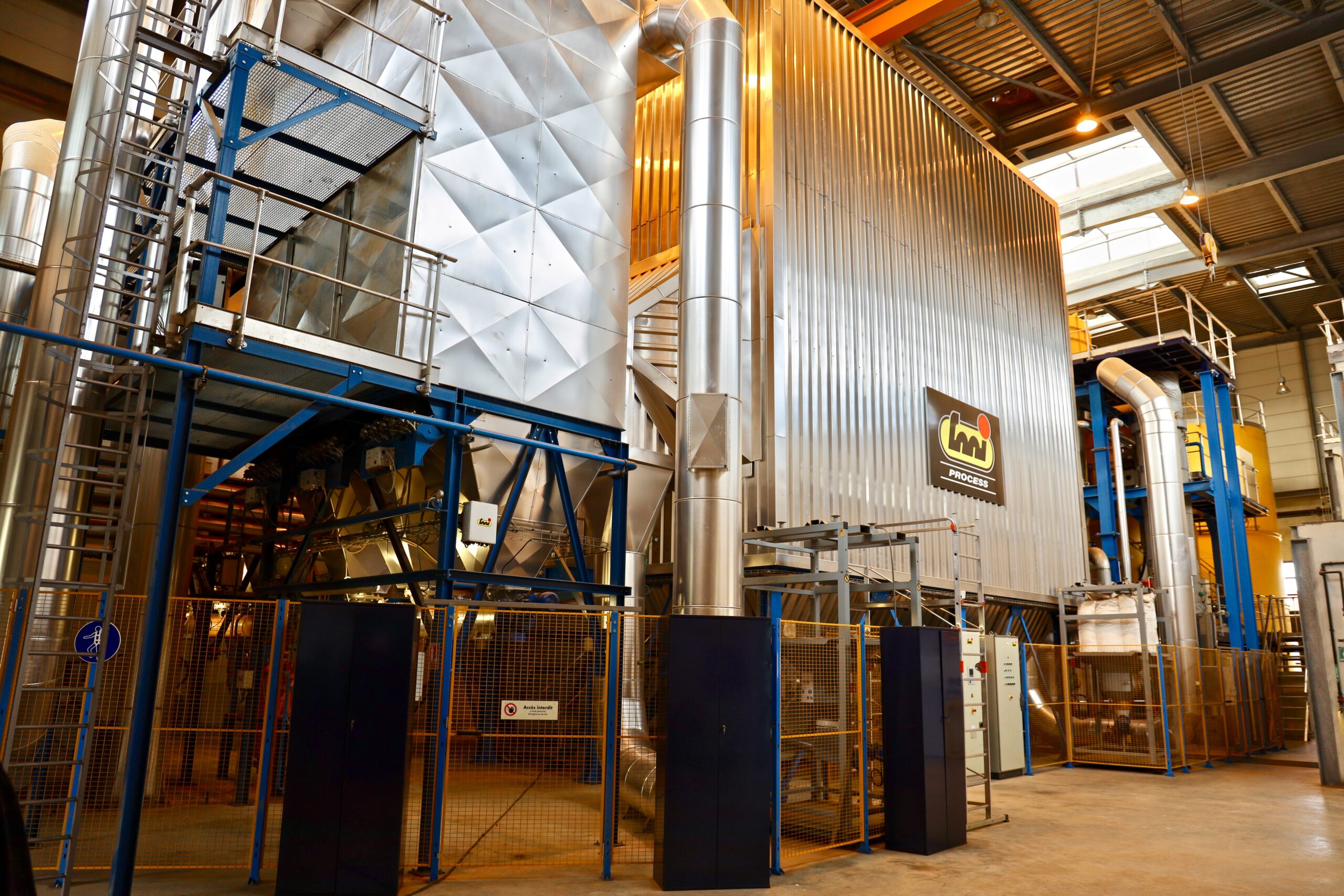
Alone or combined with technologies such as anaerobic digestion, an important amount of energy from sludge combustion can be recovered and used to:
- Heat the digesters with the energy released by the combustion of digestates, (in that case, the biogas produced by these digested sludges is used for combustion),
- Drying one part of the sludge to achieve self-combustion in the furnace and considerably reduce the use of gas/biogas,
- Supply local or district or heating networks,
- Produce electricity.
Our solutions are ideally suited to anaerobic digestion projects where the complementary nature of the two technologies improves energy and financial savings.
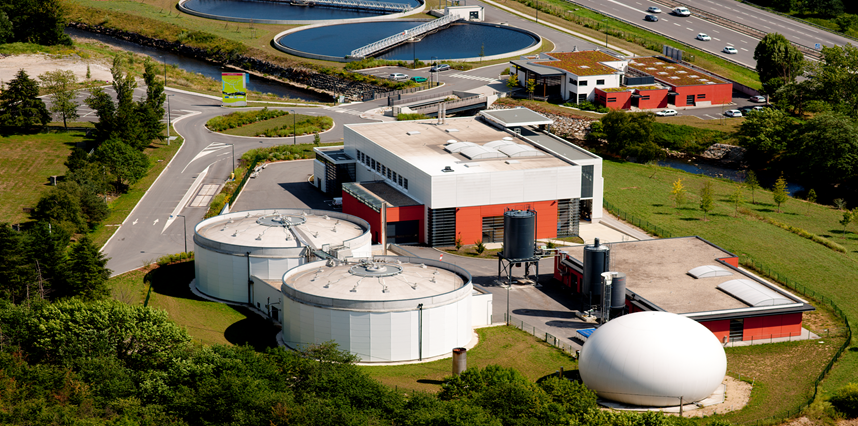
Most part of the energy involved in our processes is thus recovered and usefully used.
For exemple :
- St Etienne’s plant is equipped with a heating network that supplies heat exchangers with a total capacity of 2,000 kW to meet the heating needs of the wastewater treatment plant. Compared with gas, this recovery avoids up to 500 tons* of CO2 emissions every year.
- St-Chamond’s installation, equipped with a 400-kW heat exchanger, supplies a heating network to meet the heating needs of a school, the inspectorate and housing. Compared with gas, this investment avoids the emission of over 100 tonnes* of CO2 every year.
- The Aurillac Agglomeration Community facility has a heating network covering the needs of the municipal swimming pool.
- The wastewater federation of Thonon – Evian uses a heating network fed by our process to heat the premises of its wastewater treatment plant.
4 – ADDING VALUE TO BY-PRODUCTS:
Sludge incineration by-products represent a valuable and mineral-rich potential. A suitable management is essential to minimize environmental impacts while exploiting their recovery potential.
Its composition depends on different factors, including sludge composition, incineration conditions and the technologies that are used. The main constituents of ashes are minerals matter such as silica, alumina, phosphorus, and lime.
These sludge incineration by-products can also be used as construction materials in civil engineering, by mixing with appropriate binders, and then transformed into building materials such as bricks, concrete blocks, and asphalt mixes. They are also used in cement works, as substitutes for conventional products used in the manufacture of concrete.
Because of its mineral content, ash can be recycled for agricultural use, in particular to recover phosphorus, which is the world’s natural resources that will run out of in the decades to come, or used directly as fertilizer (phosphate fertilizer and calcium amendment), as it’s used in some countries (Canada, Germany, etc.).




